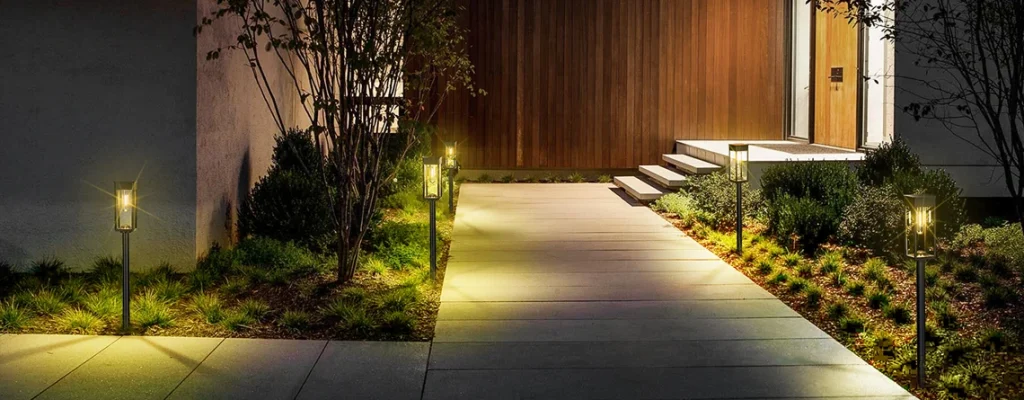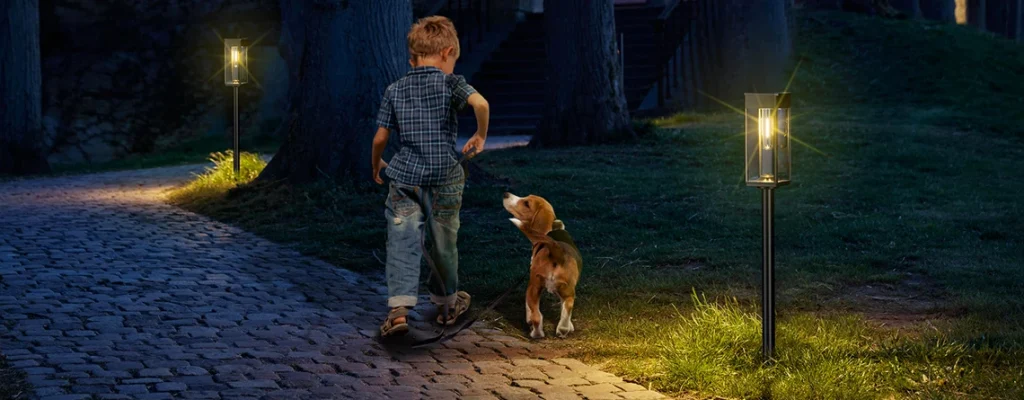Introduction to Solar Lighting for Eco-Conscious Consumers
Solar lighting is transforming the way we illuminate our homes and businesses, offering a sustainable, cost-effective alternative to traditional lighting systems. For environmentalists and green building professionals, selecting solar lighting products with reputable certifications like Energy Star and LEED ensures both ecological benefits and long-term savings. This guide explores the key aspects of these certifications, regional subsidies in states like California and New York, and a detailed comparison of certified versus non-certified solar lighting. By understanding these elements, you can make informed decisions to support a greener future while maximizing value.

Understanding Energy Star Certification for Solar Lighting
What Is Energy Star Certification?
The Energy Star program, established by the U.S. Environmental Protection Agency (EPA) in 1992, is a trusted symbol of energy efficiency. For solar lighting, Energy Star certification indicates that a product meets stringent performance criteria, ensuring reduced energy consumption and environmental impact. Certified products are rigorously tested to deliver high efficiency and durability, making them ideal for eco-conscious consumers and green building projects.
Core Indicators of Energy Star-Certified Solar Lighting
To earn the Energy Star label, solar lighting products must meet specific technical benchmarks:
- Photoelectric Conversion Efficiency ≥ 18%: This measures how effectively a solar panel converts sunlight into usable electricity. A higher efficiency ensures more light output with less energy waste.
- Standby Power Consumption ≤ 0.5W: Low standby power reduces energy use when the lighting system is not actively illuminating, extending battery life and minimizing environmental footprint.
These metrics ensure that Energy Star-certified solar lights outperform standard models in both efficiency and sustainability, making them a top choice for environmentally responsible lighting solutions.
Benefits of Choosing Energy Star-Certified Products
Opting for Energy Star-certified solar lighting offers multiple advantages:
- Lower Utility Bills: Certified products consume less energy, reducing electricity costs over time.
- Environmental Impact: Reduced energy use translates to lower greenhouse gas emissions, aligning with the goals of environmentalists.
- Durability and Reliability: Certified products undergo rigorous testing, ensuring long-term performance and fewer replacements.
By prioritizing Energy Star certification, you invest in high-quality, eco-friendly lighting that supports both your wallet and the planet.
LEED Certification and Solar Lighting
What Is LEED Certification?
Leadership in Energy and Environmental Design (LEED), developed by the U.S. Green Building Council (USGBC), is the world’s most widely recognized green building certification system. Unlike Energy Star, which focuses solely on energy efficiency, LEED takes a holistic approach, evaluating factors like water conservation, indoor air quality, and sustainable materials. For residential and commercial projects, incorporating solar lighting can contribute valuable points toward LEED certification.
How Solar Lighting Contributes to LEED Points
Installing solar lighting in a LEED project can earn 2–3 points under the Energy and Atmosphere (EA) category, specifically for renewable energy use. These points are awarded based on the percentage of a building’s energy needs met by on-site renewable sources like solar lights. For example:
- 2 Points: Solar lighting systems that offset 5% of the building’s annual energy consumption.
- 3 Points: Systems that offset 7.5% or more of energy use.
These points can help a project achieve higher LEED certification levels, such as Certified, Silver, Gold, or Platinum, enhancing the building’s marketability and environmental credentials.
LEED Certification Application Process
To integrate solar lighting into a LEED project, follow these steps:
- Select a LEED Rating System: Choose the appropriate system (e.g., LEED for Homes, LEED for Building Design and Construction) based on your project type.
- Register the Project: Use LEED Online or the Arc platform (for LEED v5) to register your project with the USGBC.
- Incorporate Solar Lighting: Work with a LEED Green Rater to ensure your solar lighting system meets EA credit requirements.
- Submit Documentation: Provide evidence of energy savings, such as performance data from your solar lighting system.
- Undergo Verification: A third-party review by the Green Business Certification Inc. (GBCI) confirms compliance with LEED standards.
- Achieve Certification: Earn points and receive your LEED certification level, valid for five years.
By strategically incorporating solar lighting, you can boost your project’s sustainability score and appeal to eco-conscious stakeholders.

Regional Subsidies for Solar Lighting in California and New York
California Solar Lighting Incentives
California leads the nation in renewable energy adoption, offering a range of incentives for solar lighting installations. Key programs include:
- Federal Solar Tax Credit (ITC): Under the Inflation Reduction Act, homeowners and businesses can claim a 30% tax credit on the cost of solar lighting systems, including installation, through 2032. This applies to both residential and commercial properties with no income limits.
- Property Assessed Clean Energy (PACE): Available in cities like La Mesa, PACE programs allow property owners to finance solar lighting projects through a voluntary property tax assessment, spreading costs over time.
- Local Utility Rebates: Utilities like Anaheim Public Utilities offer rebates for energy-efficient equipment, including solar lighting, under programs like the Green Building Incentives Program. Rebates can cover up to $1,500 for qualifying installations.
- Net Energy Metering (NEM): Homeowners with solar lighting systems paired with battery storage can receive credits for excess energy fed back to the grid, reducing overall energy costs.
These incentives make California an ideal location for adopting solar lighting, combining upfront cost reductions with long-term savings.
New York Solar Lighting Incentives
New York also offers robust support for solar lighting through state and local programs:
- NYSERDA Energy-Efficient Lighting Program: The New York State Energy Research and Development Authority (NYSERDA) provides rebates for energy-efficient lighting, including solar-powered LED fixtures, which can reduce installation costs for homeowners and businesses.
- Federal Solar Tax Credit (ITC): Similar to California, New York residents can claim a 30% federal tax credit for solar lighting installations through 2032.
- NY-Sun Initiative: This program offers financial incentives for solar energy systems, including solar lighting, with a focus on reducing upfront costs for residential and commercial projects. Funding is available for both on-site and community solar projects.
- Property Tax Exemptions: New York provides a 15-year property tax exemption for the added value of solar energy systems, including solar lighting, ensuring that installations do not increase property tax burdens.
These subsidies make solar lighting an attractive option for New Yorkers committed to sustainability and cost savings.
Comparison of California and New York Subsidies
The following table compares key solar lighting incentives in California and New York:
| Incentive Type | California | New York |
|---|---|---|
| Federal Tax Credit | 30% of installation costs (no cap) through 2032 | 30% of installation costs (no cap) through 2032 |
| State/Local Rebates | PACE programs, utility rebates (e.g., up to $1,500 from Anaheim Public Utilities) | NYSERDA rebates, NY-Sun Initiative funding |
| Property Tax Benefits | PACE financing through property tax assessments | 15-year property tax exemption for solar system value |
| Net Energy Metering | Available for systems with battery storage | Available for systems with battery storage |
| Eligibility | Residential, commercial, institutional | Residential, commercial, institutional |
Both states offer significant financial support, but California’s PACE programs provide unique financing options, while New York’s property tax exemptions offer long-term tax relief.
Certified vs. Non-Certified Solar Lighting: A Cost-Saving Comparison
Why Choose Certified Solar Lighting?
Certified solar lighting, such as Energy Star or LEED-compliant products, offers superior performance compared to non-certified alternatives. These products are designed to maximize energy efficiency, reduce maintenance costs, and align with green building standards. To illustrate the financial benefits, consider the following comparison of a certified versus a non-certified solar lighting system over five years.
Year-by-Year Energy Savings Comparison
The table below compares the annual energy costs of a typical Energy Star-certified solar LED light versus a non-certified equivalent, assuming a household uses 10 outdoor lights for 6 hours per night at an average electricity rate of $0.15 per kWh.
| Year | Certified Solar Light (Energy Star) | Non-Certified Solar Light | Annual Savings |
|---|---|---|---|
| 1 | $10 (0.5W standby, 18% efficiency) | $25 (1.2W standby, 12% efficiency) | $15 |
| 2 | $10 | $25 | $15 |
| 3 | $10 | $25 | $15 |
| 4 | $10 | $25 | $15 |
| 5 | $10 | $25 | $15 |
| Total | $50 | $125 | $75 |
Additional Savings:
- Maintenance Costs: Certified lights often have longer lifespans (up to 25 years for LEDs), reducing replacement costs by approximately $50–$100 over five years.
- Rebate Eligibility: Certified products qualify for rebates and tax credits, potentially saving an additional $150–$1,500 depending on the state and program.
- Total Estimated Savings: Over five years, certified solar lighting can save upwards of $300 when factoring in energy, maintenance, and incentives.
This comparison highlights the significant financial and environmental benefits of choosing certified solar lighting, making it a smart investment for eco-conscious consumers.
Practical Tips for Selecting Solar Lighting
Evaluate Your Needs
Consider your lighting requirements, such as brightness, coverage area, and installation location. For example, solar pathway lights are ideal for residential gardens, while high-lumen solar floodlights suit commercial properties.
Prioritize Certified Products
Look for the Energy Star label to ensure energy efficiency and check for compatibility with LEED standards if you’re pursuing green building certification. Verify product specifications, such as photoelectric conversion efficiency and standby power consumption, to confirm compliance.
Research Local Incentives
Before purchasing, explore available subsidies in your region. In California, check with local utilities like Anaheim Public Utilities for rebates, and in New York, consult NYSERDA’s website for funding opportunities. Always confirm eligibility requirements to maximize savings.
Work with Trusted Suppliers
Choose reputable manufacturers and installers with experience in Energy Star and LEED-compliant products. For LEED projects, collaborate with a LEED Green Rater to ensure proper documentation and verification.
Conclusion: Embrace Solar Lighting for a Sustainable Future
For environmentalists and green building professionals, solar lighting offers a powerful way to reduce energy consumption, lower costs, and contribute to sustainability goals. By choosing Energy Star-certified products, you ensure high efficiency and reliability, while LEED compliance can elevate your green building projects. With generous subsidies in states like California and New York, the financial barriers to adopting solar lighting are lower than ever. Over five years, certified solar lights can save over $300 compared to non-certified alternatives, making them a high-value choice for eco-conscious consumers. Start your journey toward sustainable lighting today and illuminate a greener tomorrow.

Comments